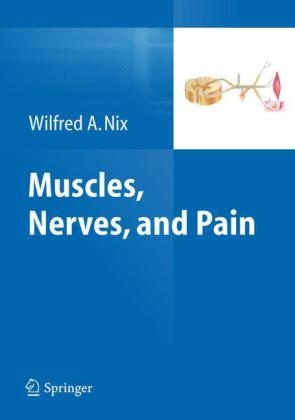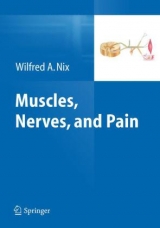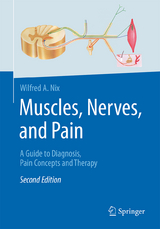Muscles, Nerves, and Pain
A Guide to Diagnosis, Pain Concepts and Therapy
Seiten
2012
|
2012
Springer Berlin (Verlag)
978-3-642-25442-0 (ISBN)
Springer Berlin (Verlag)
978-3-642-25442-0 (ISBN)
- Titel erscheint in neuer Auflage
- Artikel merken
Zu diesem Artikel existiert eine Nachauflage
Many patients suffer from problems in their muscles or nerves in combination with pain. This book is about the interplay of these problems.
Pain is the subjective experience of a psycho-physical phenomenon arising from a defined area in the body. It is a cry for help and challenges the physician to ask the right questions and to carry out the right examinations. If they succeed in doing so, the patient’s signs and symptoms will be translated into the present knowledge of pain concepts to initiate appropriate therapy. With this goal in mind, this book summarizes the latest scientific information on pain states and their mechanisms. It provides a deeper understanding of the different pain conditions and allows physicians to form strategies for a mechanism-based pain therapy. When puzzling symptoms of sensory, motor and autonomic deficits are evident, an examination has to be performed systematically in order to reach the correct diagnosis. This calls for suitable anatomical knowledge. Depending on where a lesion exists within a peripheral nerve, the root or the plexus, typical patterns of paralysis can be detected. Numerous illustrations help physicians to more easily understand and solve problems of peripheral nerve and root injuries and their sequels in their daily work.
Pain is the subjective experience of a psycho-physical phenomenon arising from a defined area in the body. It is a cry for help and challenges the physician to ask the right questions and to carry out the right examinations. If they succeed in doing so, the patient’s signs and symptoms will be translated into the present knowledge of pain concepts to initiate appropriate therapy. With this goal in mind, this book summarizes the latest scientific information on pain states and their mechanisms. It provides a deeper understanding of the different pain conditions and allows physicians to form strategies for a mechanism-based pain therapy. When puzzling symptoms of sensory, motor and autonomic deficits are evident, an examination has to be performed systematically in order to reach the correct diagnosis. This calls for suitable anatomical knowledge. Depending on where a lesion exists within a peripheral nerve, the root or the plexus, typical patterns of paralysis can be detected. Numerous illustrations help physicians to more easily understand and solve problems of peripheral nerve and root injuries and their sequels in their daily work.
1. Basics of anatomy.- 2. Examination process.- 3. Electrophysiology.- 4. Radicular lesions.- 5. Lesions of single nerves.- 6. Pain from nerve, muscle, and tissue.- 7. Polyneuropathy.- 8. General therapeutic guidelines.
| Zusatzinfo | VIII, 172 p. 99 illus., 80 illus. in color. |
|---|---|
| Verlagsort | Berlin |
| Sprache | englisch |
| Maße | 168 x 240 mm |
| Gewicht | 455 g |
| Themenwelt | Medizin / Pharmazie ► Medizinische Fachgebiete |
| ISBN-10 | 3-642-25442-X / 364225442X |
| ISBN-13 | 978-3-642-25442-0 / 9783642254420 |
| Zustand | Neuware |
| Haben Sie eine Frage zum Produkt? |
Mehr entdecken
aus dem Bereich
aus dem Bereich
Kompaktes Wissen, Sprachtraining und Simulationen für Mediziner
Buch | Softcover (2020)
Urban & Fischer in Elsevier (Verlag)
CHF 55,95





